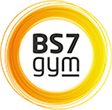1 October 2014
Part 2 – Self Myofascial Release
This feature follows the previous article on the importance of flexibility, which highlighted the necessity of maintaining the body’s range of motion, optimal alignment and length tension relationships through stretching. However, due to the vigour’s of life, be it intense sport or exercise, impact, prolonged and repeated poor posture or faulty movement patterns, our muscles often develop knots and adhesions within the fibres. Once this has happened the fibres ability to extend and slide in their normal channels is reduced, thus compromising flexibility along with fibre recruitment and force production.
If the muscle has entered this knotted state then the stretching approach is unlikely to yield significant results. With the muscle fibres glued down and matted together, the affected areas will be unchanged by the application of stretching, this will simply cause the healthy, un-adhered fibres to extend. So what can you do when a fibre is knotted to return it to its correct length?
Most of us are familiar with the benefits of massage, some of us are experienced in the pain/rewards of a deep tissue sports massage. But are you familiar with Self Myofascial release (SMR)? Massage techniques generally release tension from muscles by techniques such as trigger pointing, which attacks knots, adhesions and scar tissue in the muscle. This unwanted tension can build-up unnoticed and cause the muscles to work inefficiently, cause pain, restrict movement and overload other areas of the body.
SMR uses foam rolls and other tools to attack knotted areas of muscle in order to breakdown the adhesions and release tension, reduce pain and improve function. Based on proven trigger pointing technique, it can be an extremely effective tool, if a little uncomfortable during the rolling. Just remember though, if you find a tender spot, you really need to do this exercise. Don’t think “it hurts a bit, so I won’t do anymore”! It will get easier and the benefits can be enormous. Besides it will cost you a lot less than a Physio and you control the intensity of the sensation, not someone else! Flexibility can be vastly improved when stretching alone will fail, muscles will function better making you stronger and pain, injury and the potential for these can be reduced.
Although it is beyond the scope of this article to provide in-depth techniques for the application of SMR, some general rules are as follows:
Always ensure you maintain decent posture and alignment when rolling any areas of the body. I say decent as perfect is probably not achievable, especially when try to roll some tricky areas, so decent is acceptable.
When supporting the body on elbows or hand, keep the point of contact with the floor aligned with the shoulder. This will reduce stress on the shoulder, allowing you to hold position for longer and ensure you’re not adding a shoulder injury to your list.
Always ensure you engage your core when performing the rolling. This works in combination with decent posture so you cause yourself any issues while rolling.
The tight and tender spots are where attention should be focussed. Once you’ve pinpointed a tender area hold the pressure on that spot for 10 – 30 seconds, or until the discomfort has reduced by half, then move on to another area.
If you are unsure of the approach for applying SMR to any part of the body, speak to one of our personal trainers for further advice.

